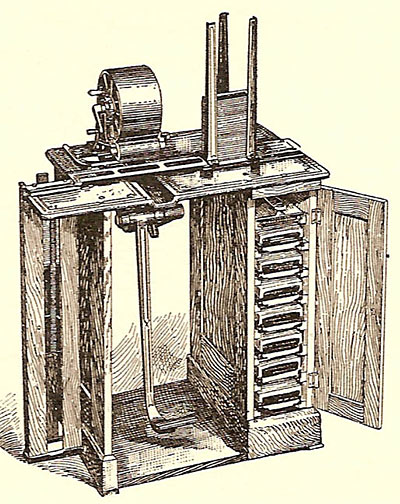 United States coils have always presented a problem to stamp collectors. The first problem was whether they should be collected at all, at least as major numbers with spaces in all the stamp albums. US coils were the first worldwide coils to be issued and were done so at the behest of large businesses that did a great deal of mailing. In the days before postage meters, it was much easier to get a coil roll and place the stamps on envelopes without having to tear them into strips or singles first. Within a few years, large machines were affixing coils for mailing houses, and the Postal Service was issuing coils in rolls of up to 5,000 for their machines. The real issue for stamp catologers at the time was how to list coils. They are stamps of a different format but not of a different design from the regular issues that they came from. Precedence should have dictated that the stamps not receive a separate catalog listing, at least not as major numbers. The issue had come up before with booklet stamps. Earlier US booklets originally had had single stamps from the booklet listed as collectible varieties, but they were excluded after a short period of time. Then for several years, specialists collected “booklet singles.” Now, they are completely ignored. Many collectors felt the same reasoning should apply to coils, and they should be listed as “a” numbers of the stamps that they were derived from or not listed at all.
United States coils have always presented a problem to stamp collectors. The first problem was whether they should be collected at all, at least as major numbers with spaces in all the stamp albums. US coils were the first worldwide coils to be issued and were done so at the behest of large businesses that did a great deal of mailing. In the days before postage meters, it was much easier to get a coil roll and place the stamps on envelopes without having to tear them into strips or singles first. Within a few years, large machines were affixing coils for mailing houses, and the Postal Service was issuing coils in rolls of up to 5,000 for their machines. The real issue for stamp catologers at the time was how to list coils. They are stamps of a different format but not of a different design from the regular issues that they came from. Precedence should have dictated that the stamps not receive a separate catalog listing, at least not as major numbers. The issue had come up before with booklet stamps. Earlier US booklets originally had had single stamps from the booklet listed as collectible varieties, but they were excluded after a short period of time. Then for several years, specialists collected “booklet singles.” Now, they are completely ignored. Many collectors felt the same reasoning should apply to coils, and they should be listed as “a” numbers of the stamps that they were derived from or not listed at all.
The Problem With Coils
Why the catalogers in the 1912-20 period chose to list the coils as separate stamp issues is not clear. Precedence certainly indicated that they should not be separate Scott numbers, but two powerful forces lined upon the side of coils. First, was the boring quality of the 1901 definitive issue. The issue was well designed but during its ten years of production produced almost no varieties. Catalogers were anxious to use their skills and looked far more favorably on varieties of Washington-Franklins because of the previous paucity of unusual issues. Don’t underestimate this as a cause. Today, we are in a period of so very many definitive issue varieties and errors of every type that many varieties get barely a mention whereas 100 years ago they would have been significant rarities. The second and more important reason why coils obtained major catalog listings was because important dealers bought full coil rolls of many of the scarcer coils from the Bureau of Engraving and Printing. These dealers had a strong financial interest in seeing that as many collectors as possible needed their coil stamps. This close association of Scott editors and major stamp dealers no longer exists, but it certainly did a century ago and should never be underestimated when considering motivations for why the Scott catalog listed what it did in years gone by.
It wasn't enough that coils probably should have received a “specialist only” designation. From the first, stocks of imperforate stamps that the BEP made into coils were issued to the public. From the first signs of scarcity, counterfeiters have forged coils on these imperforated stamps to imitate the rare coils. I wish I could report that their work was crude and that fake coils are easy to spot. Hardly! Until the 1980s little was done to winnow fake coils out of collections. Now, it seems like four out of every five coils are fake, and, frankly, I am distrustful of even certified coils as standards have changed over the years on what points experts look at to determine fake from genuine, and these standards will probably change again. As time goes on, experts often become less expert. When collectors ask me what to do, I tell them the throw the coils pages for Scott #348-356, 385-396, and 441-447 out of their albums. There are enough other stamps to collect, and my experience after nearly fifty years of working with them is that no one knows with complete certainty what is good and what is bad. And it is not as if there aren't enough other United States stamps to collect.
